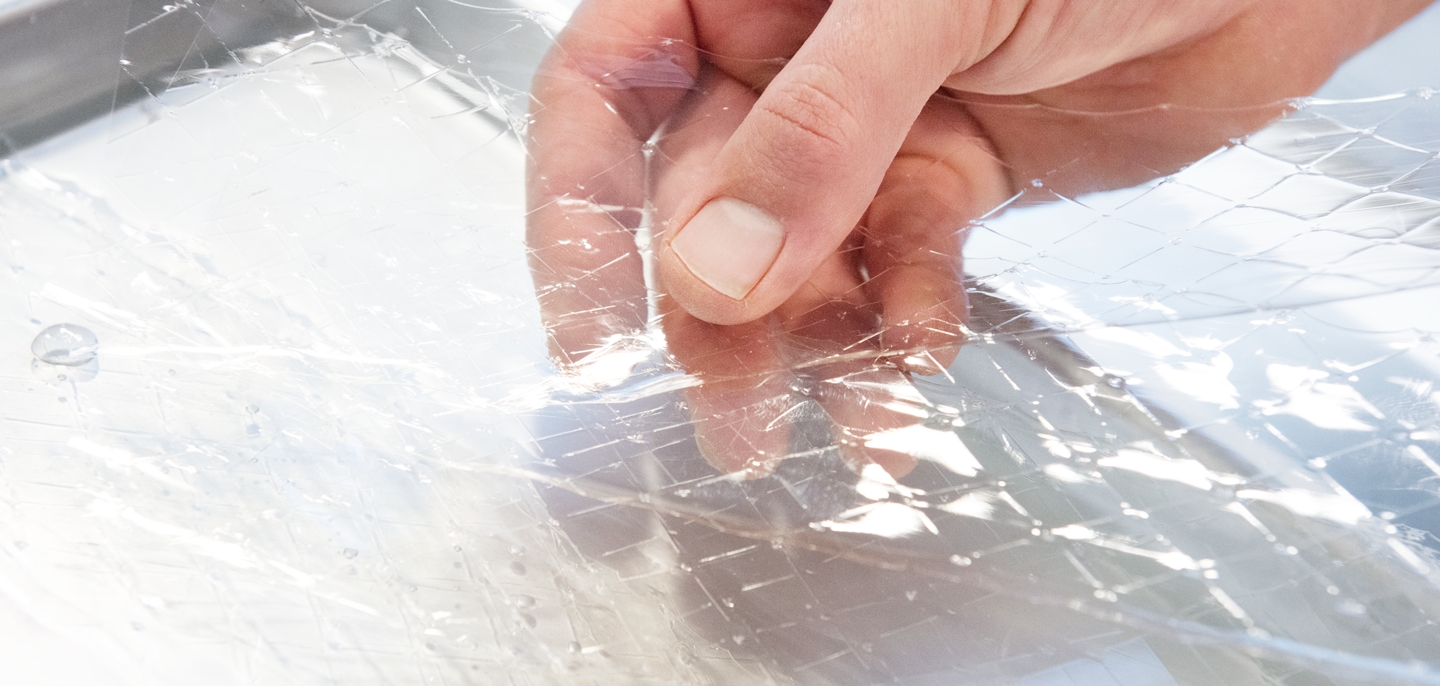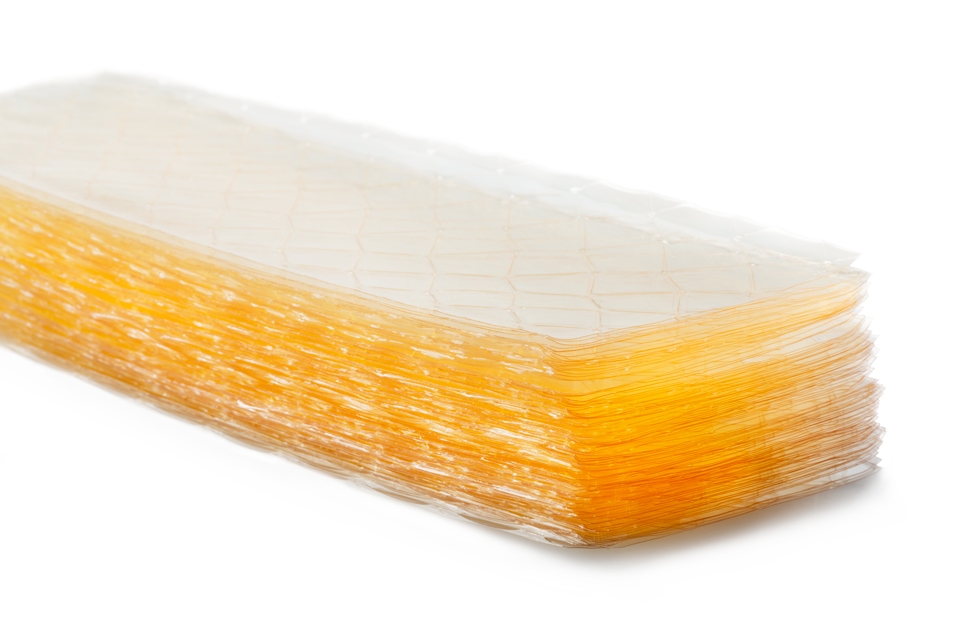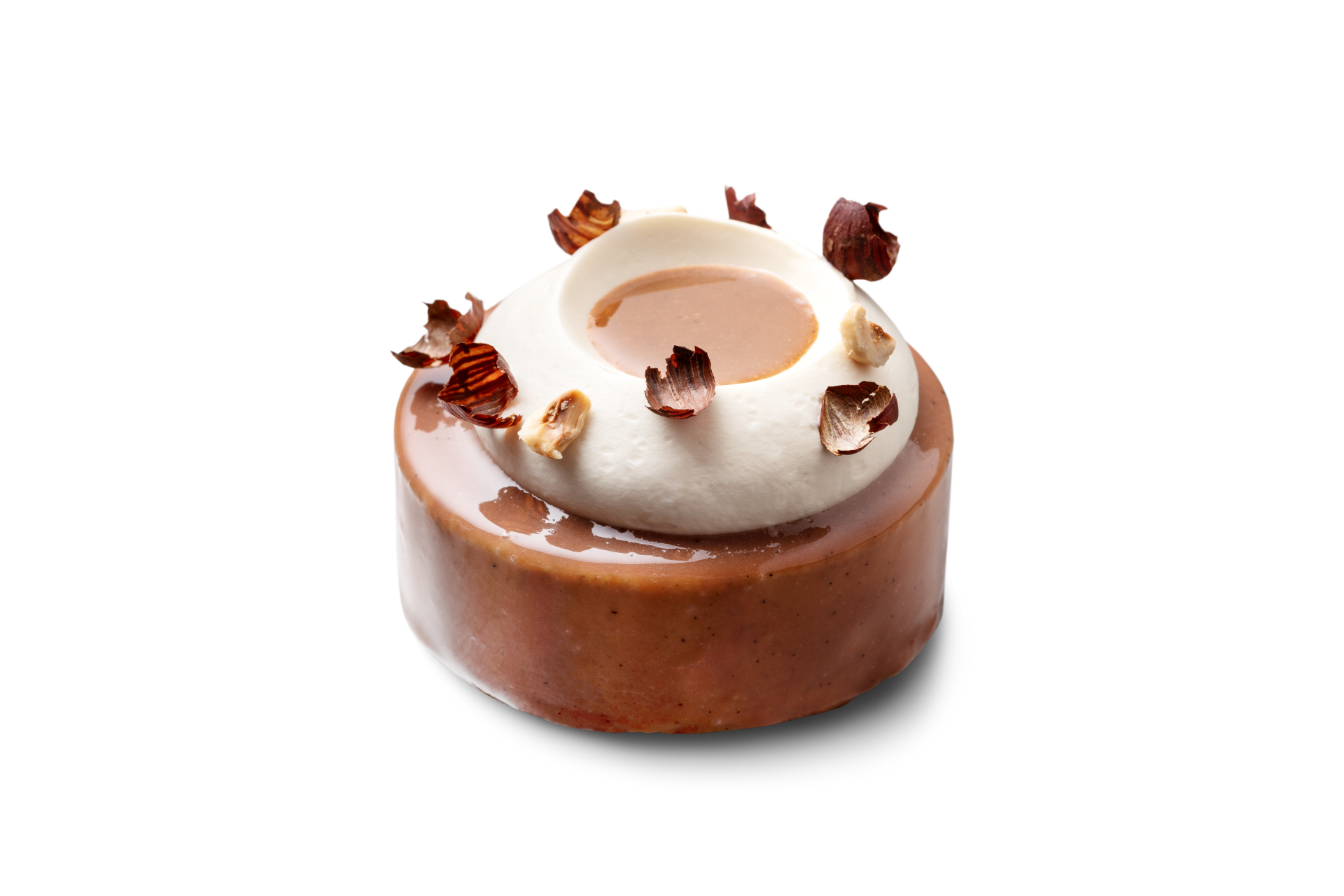Gelatin
Gelatin (E411) is a natural ingredient derived from collagen taken from animal body parts, (fish)bones, skins and connective tissue. It’s colourless, translucent, flavourless type is used in the food industry for jellifying soft and liquid preparations: pâté, mousse, croquettes, gummies, and marshmallows.
Together with the ‘Nouvelle Cuisine’ trend in the late seventies Gaston Lenôtre made gelatin popular by using it in his cold and sweet desserts. Ten years later the introduction of mousses, bavarois and entremets based on new recipes and techniques was a fact. The next boost and popularity came from the Adria Brothers (Michelin chefs at Restaurant El Bulli, Spain). They experimented with new insights and borders of gastronomy.

Professionals are trained on a very traditional base and gelatin sheets were the standard. It’s almost impossible to realize a professional mousse or bavarois without gelatin. Gelatin in airy recipes gives stability and makes rich preparation freeze stable. Labels like gold, silver and bronze indicate the pureness and strength of the gelatin. Today the strength or swelling power is indicated in ‘Bloom’, between 135 and 275 Bloom.
For religious reasons pork or animal based gelatins are banned in certain regions and therefore fishbone gelatin or vegetal gelatin are remarquable alternatives. Cocoa butter, pectin and agar to bind and stabilize food applications are getting popular, but the standard today remains gelatin.

Gelatin sheets or powder?
French pastry recipes use powder gelatin in stead of gelatin sheets. There is no technical difference if same Bloom content is followed. The difference is in the preparation.


Gelatin powder
Hydrate 5 times the weight of gelatin powder with water and leave for minimum 30 minutes. Melt and use in the preparation.
20 grams of gelatin powder (200 Bloom) + 100 g cold water = 120 g gelatin mass = +/- 10 sheets of gelatin (gelatin sheets weight for approx. 2 grams each).
If you read in a recipe 180 grams gelatin mass, devide by 6 makes 30 grams of gelatin (powder or sheets). All Debic recipes indicate gelatin in grams and have a Bloom content of 180-200 Bloom.


Gelatin sheets
Soak sheets of gelatin in sufficient cold water during minimum 30 minutes. Do not hesitate the prolong the hydrating time, the absorption of gelatin sheets has a maximum so overnight in the fridge will not give any deviating results. Gelatin sheets absorbs approx. 5 to 6 time their weight.
Squeeze gently to remove excess water. Melt it in the microwave (60-80°C), preferably with a small amount of fruit purée, anglaise or cream. Add the rest of the whipped cream or puree. This to avoid clumps or strings in the preparation.
If you prefer to work with gelatin sheets, weigh them on a scale, don’t count the sheets
Discover how pastry chef Frank Haasnoot uses gelatin in his Lemon grass - Mango Entremet.

Discover how top chef Petr Kunc uses gelatin in his preparation of Catfish with apple-horseradish candy.





